The in-demand Nashville session player unveils what comes with him when he leaves the studio.
Recording artist, hit songwriter, and sought-after session player Jedd Hughes invited PG’s John Bohlinger to his soundcheck before his gig at Nashville’s 3rd and Lindsley. Hughes came in with a home-made T-style, a vintage hollowbody, and some custom acoustics. Check it out.
Brought to you by D’Addario: https://ddar.io/wykyk-rr
Homebrew Tele
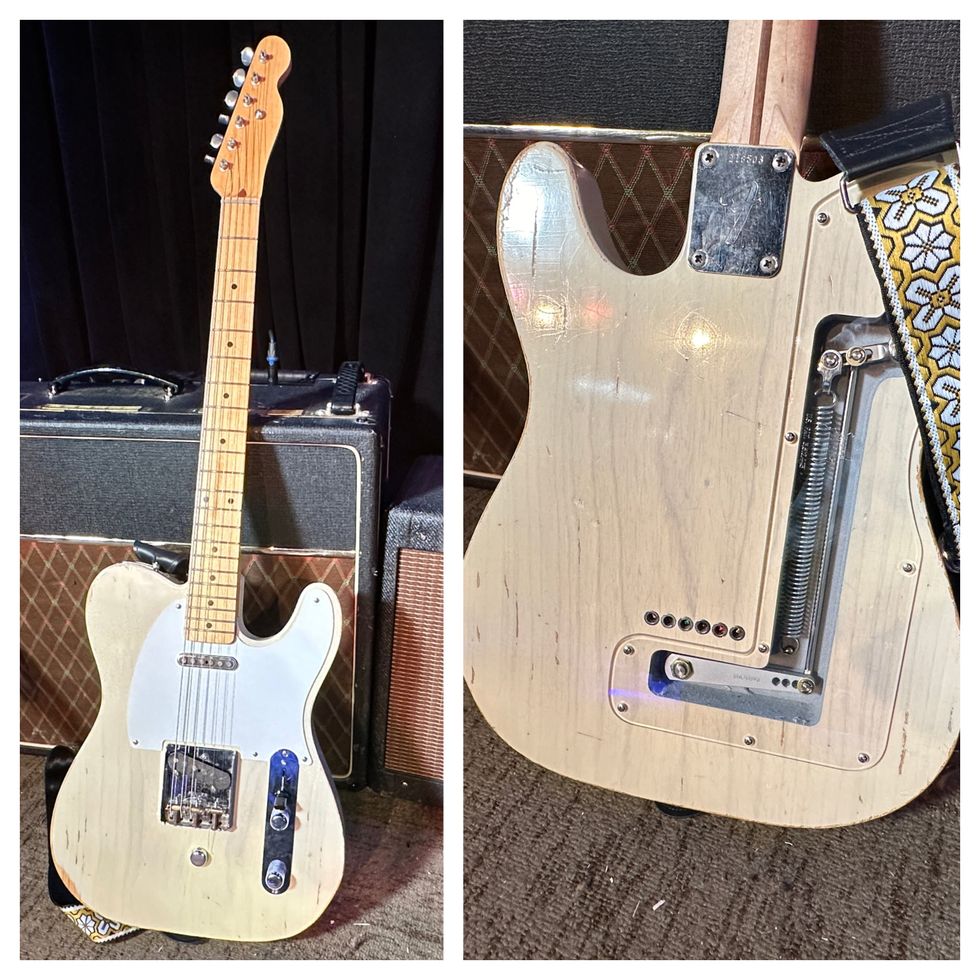
Hughes built his Tele using a one-piece lightweight ash body with a Gene Parsons long-pull B-bender. Hughes shaped the maple neck to a soft V profile using StewMac tools. The pickups were both designed by Ron Ellis: There’s a 50B in the bridge and a Killa in the neck position to match the 50B. The harness is from a 1955 Fender lap steel. All of his electrics are strung with D'Addario .010-.046s.
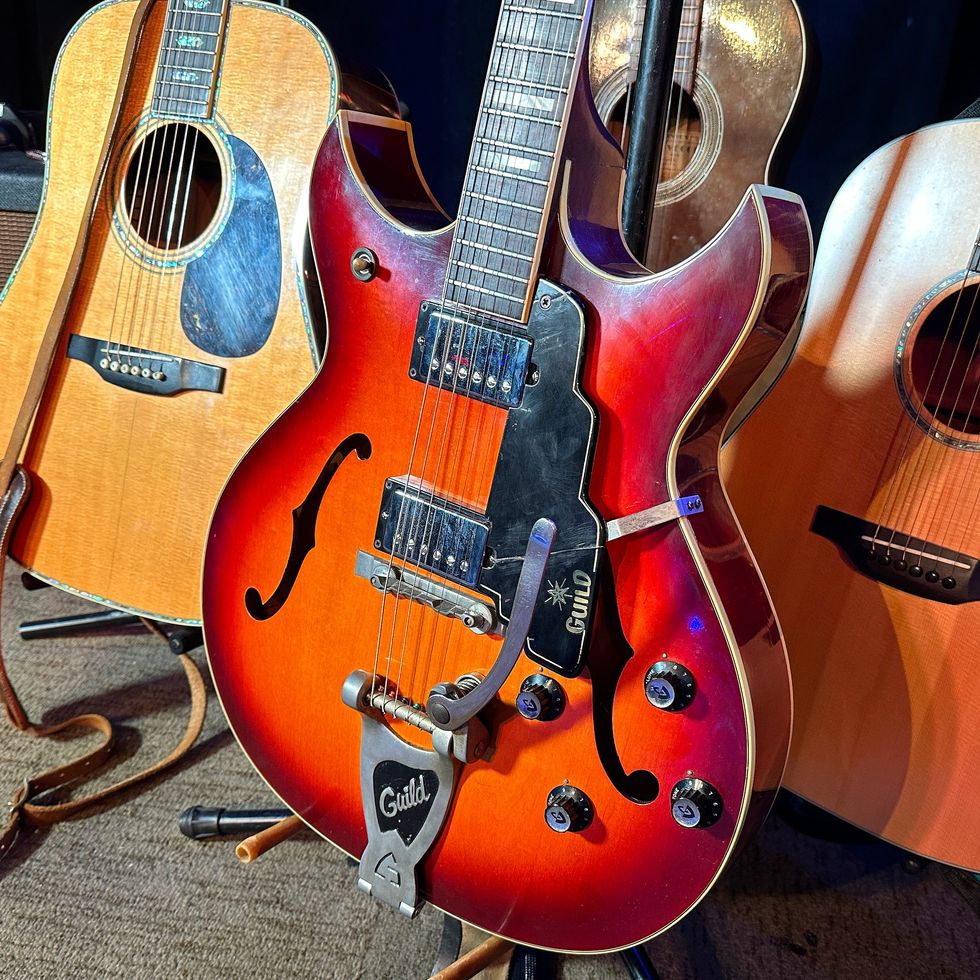
This 1967 Guild ST-403 Studio hollowbody was chopped to make room for full-size humbuckers.
Hughes' Acoustics

This 2004 DeGruchy was built specifically for Hughes, made to replicate a golden-era Martin D-45. The acoustics are strung with D'Addario .012-.052 sets, which Hughes strikes with Fender medium picks. All acoustics have K&K Sound Pure Mini pickups running through them.
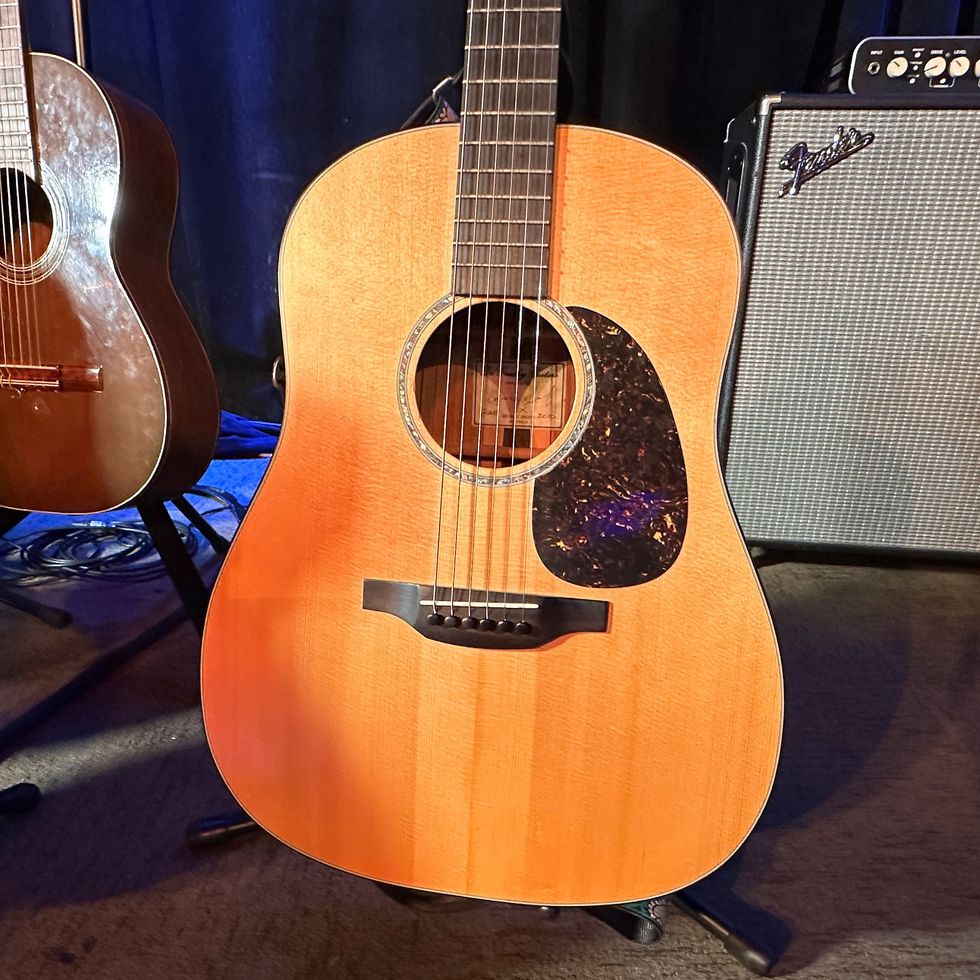
Hughes’ second-favorite acoustic is this slope shoulder DeGruchy.
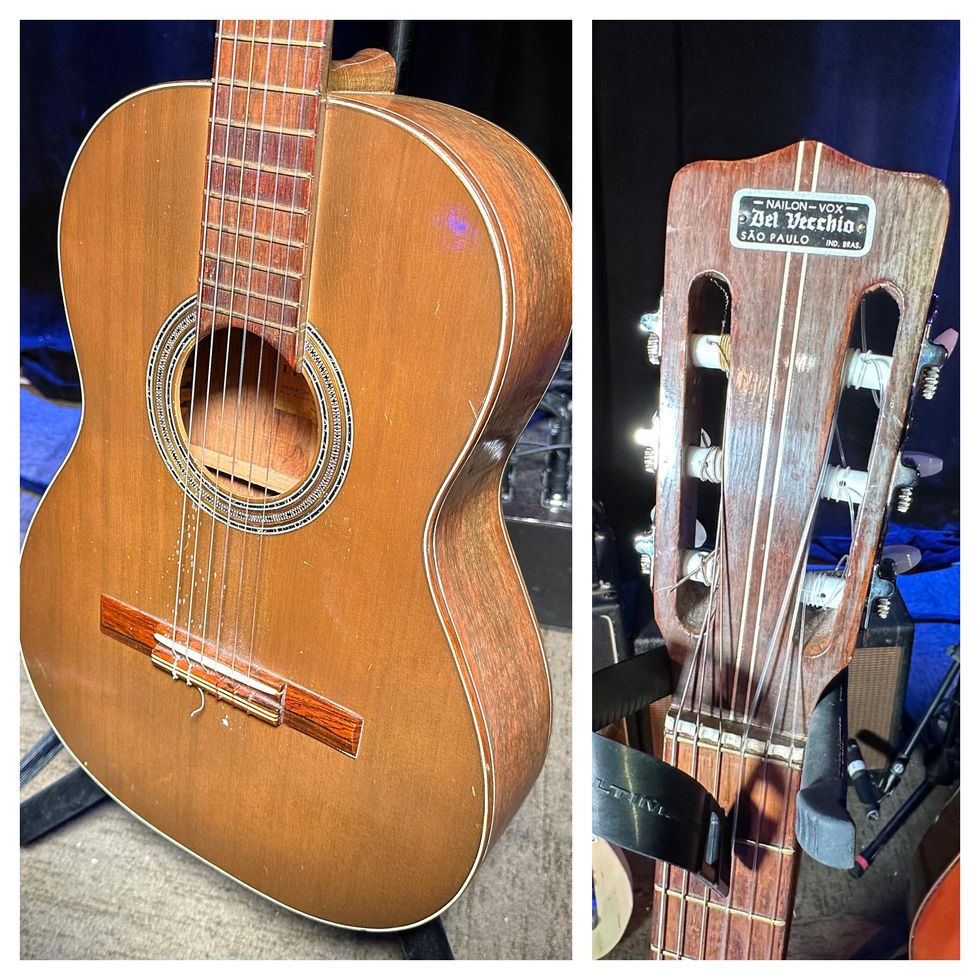
For a nylon string, Hughes goes with his old gut string Del Vecchio.
Party For Two
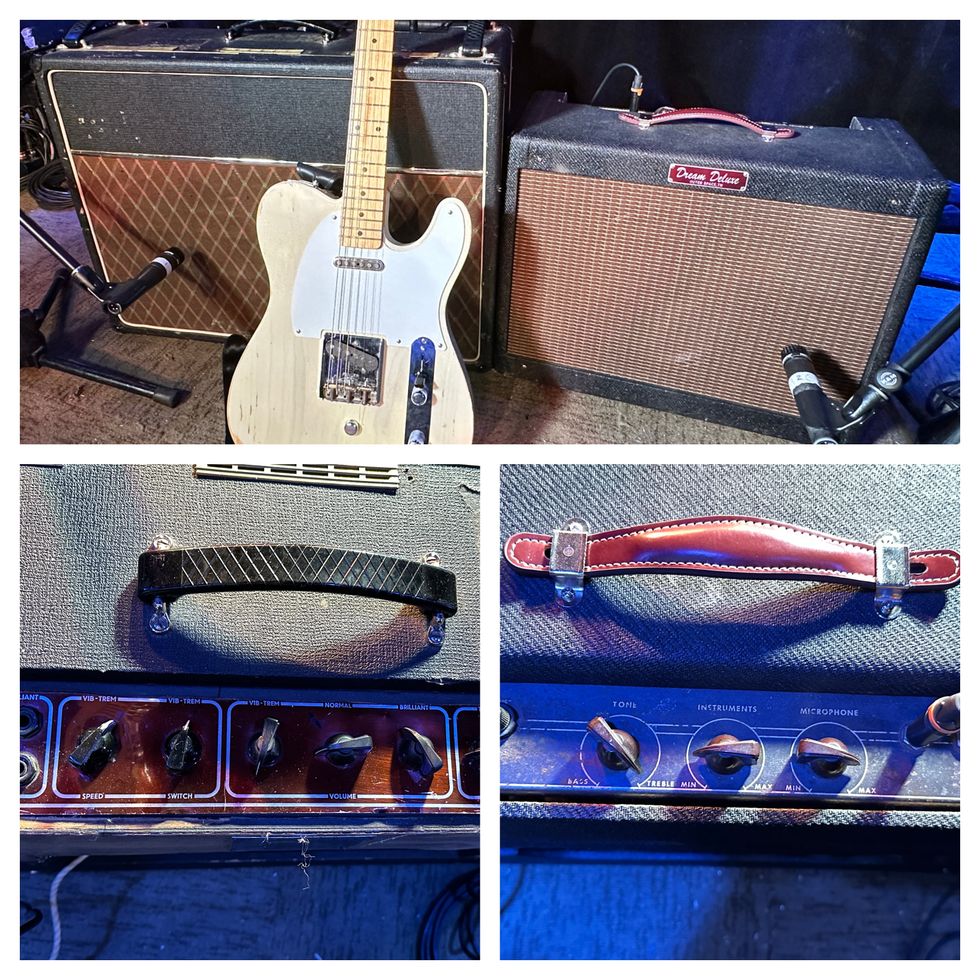
Hughes uses two amps combined, in a non-stereo setup. Amp number one is his 1952 Gibson GA-20, which has been rehoused in a Tweed Deluxe cab with a Celestion G12-65.
Number two is his tried-and-true 1962 Vox AC30.
The Boardroom
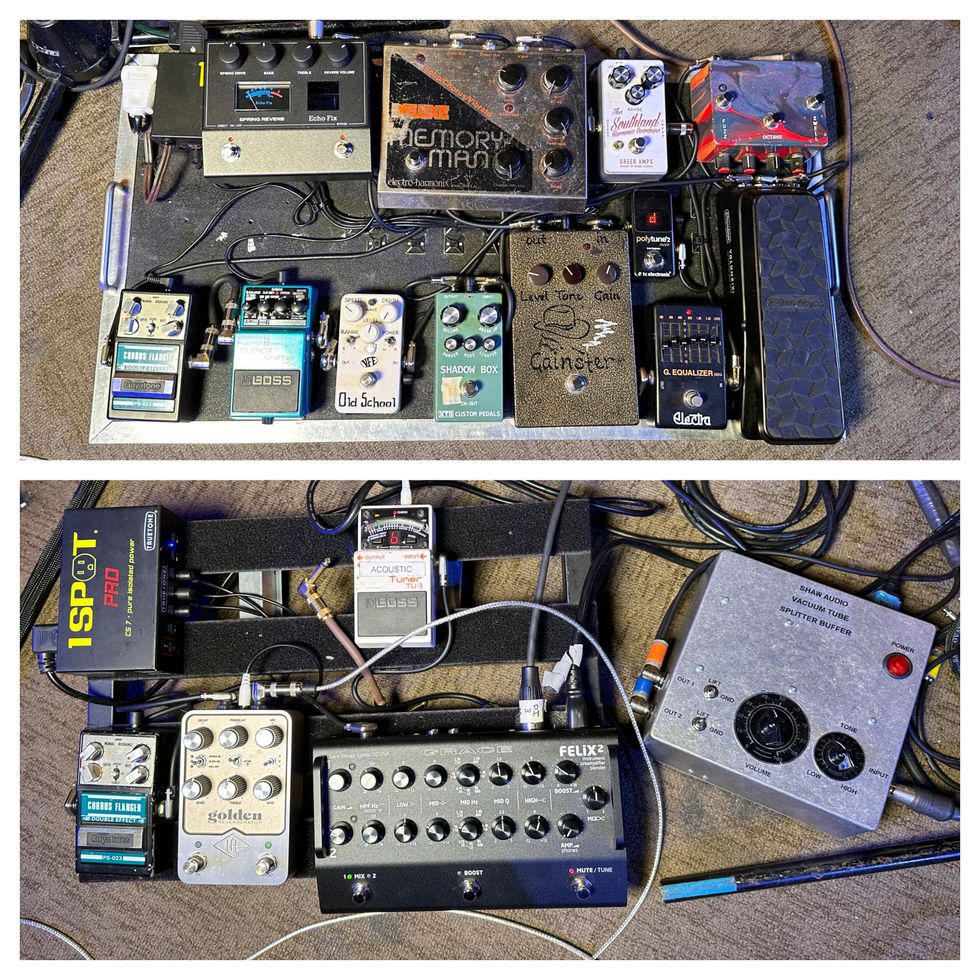
Hughes runs a larger board for his electric and a smaller one for his acoustic guitars. The electric board includes a Prescription Electronics Experience, Clark Gainster, a prototype XTS Shadow Box, Greer Southland, Dunlop volume pedal (with tuner out), VFE Old School tremolo, Boss PS-5 Super Shifter, Guyatone PS-023, EHX Deluxe Memory Man, Echo Fix EF-P2 Spring Reverb, and finally a Shaw Audio Vacuum Tube Splitter Buffer, which splits two mono lines to the amps.
Hughes runs his acoustics into a Grace Design FELiX2 preamp. From there, it hits a Guyatone PS-023, a Universal Audio Golden Reverberator, and a Boss TU-2.
Shop Jedd Hughes' Rig

Vox AC30
Dunlop DVP3 Volume (X) Volume and Expression Pedal
Boss PS-6 Harmonist Pedal
Electro-Harmonix Deluxe Memory Man Analog Delay / Chorus / Vibrato Pedal
Grace Design FELiX 2 Instrument Preamp/Blender - Silver
Universal Audio Golden Reverberator
Boss TU-2
D'Addario NYXL1046 NYXL Nickel Wound Electric Guitar Strings - .010-.046 Regular


![Rig Rundown: AFI [2025]](https://www.premierguitar.com/media-library/youtube.jpg?id=62064741&width=1245&height=700&quality=70&coordinates=0%2C0%2C0%2C0)


![Devon Eisenbarger [Katy Perry] Rig Rundown](https://www.premierguitar.com/media-library/youtube.jpg?id=61774583&width=1245&height=700&quality=70&coordinates=0%2C0%2C0%2C0)





























































